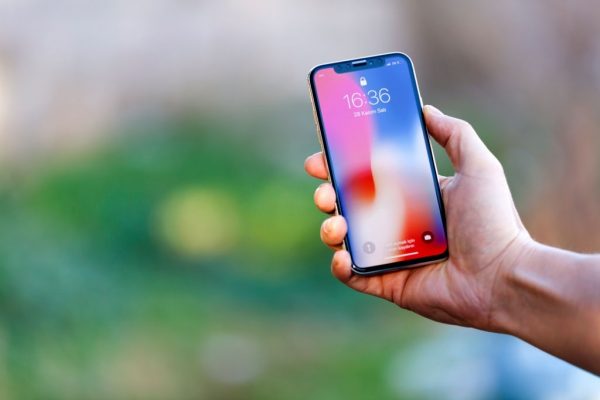Every year, we see technological advancements in every tech field. The consumer technology industry is no different as smartphones change and evolve year after year. Phones have shifted from using 4G to 5G, using touch ID to face ID, and so on. It would be unsurprising, therefore, if the industry shifted to manufacturing 4K phone models.
However, just because 4K technology is possible doesn’t mean it’s necessary. The question is: should you invest in a 4K phone, or is it just a waste of money?
4K Resolution and the 4K Phone

Over the years, phone screen resolutions have bumped up. Most recently, flagship phone manufacturers started releasing models with 2K screens at higher refresh rates. However, not many brands have released 4K phones. Nevertheless, that doesn’t mean there aren’t any 4K phone models in existence. In fact, one of the most notable examples is Sony’s Xperia Z5.
It was the first 4K resolution phone that provided an ultra-crisp display you’d normally only find on 4K TVs. This phone with 4K screen resolution made waves in the smartphone realm and caught many people’s interest. However, despite the commotion, it never truly stuck out as a noteworthy phone among its peers.
That’s because while the Xperia was the first 4K phone, the novelty wore off. Sure, 4K resolution makes a difference on large screens. However, on such a tiny handheld, it doesn’t necessarily impact text, photos, or videos that much.
There are also many factors to consider, as well as pros and cons to weigh. These kinds of phones do mean higher costs because more state-of-the-art tech always costs money. Furthermore, 4K phones have implications on performance and power which not everyone is willing to sacrifice.
Nonetheless, some die-hard smartphone enthusiasts might still clamor for a 4K phone just to get the best quality. However, because 4K resolution can take quite a lot of resources, 4K phones are not particularly beneficial. Are they truly worth the trouble and the price? Let’s find out.
What is 4K?

A 4K phone is simply a smartphone with a 4K display. It has 4x the pixels compared to HDTVs that have a 1080p resolution. These pixels are, essentially, little points of light that comprise your display. The more pixels there are, the denser and sharper the screen.
On a 4K phone, the resolution should have 3,840 pixels horizontally and 2,160 pixels vertically. This does deviate from time to time if you’re talking about movie projection that uses the 4096 x 2160 pixel standard. However, since we’re talking about 4K phone models, it’s likelier that the 4K most manufacturers refer to is 3840 x 2160 pixels.
Is 4K Better?
In theory, 4K resolution should be crisper and sharper than lower resolution screens. It does have more “building blocks” compressed in a dense surface after all. However, even 4K resolution screens don’t always guarantee a sharper and crisper viewing experience. In fact, most people can’t tell the difference between 4K and 1080p on similarly sized TVs.
Even if you compare a bigger TV screen like a 65-inch model with the two resolutions, the difference is minimal. You won’t notice much even if you sit as close as 7 feet to the TV. That’s also true even if you have 20/20 vision.
Conversely, this doesn’t mean that there are no differences between 1080p and 4K screens. In certain scenes, some details do stand out more, especially during close-up shots. However, these scenes are usually few and far between, and intentionally shot for 4K resolution screens. Most of the time, you won’t view such immersive and high-resolution content with a 4K phone.
If you truly want to take advantage of 4K’s prowess, you’d need something bigger than 65 inches. Specifically, a 120-inch screen would suffice when you’re seated 9 feet away. There should be more sharpness to the scenes, but they may not always be noticeable compared to 1080p screens, either.
Other than that, 4K screens are best made for viewing photos without movement. These will enhance the viewing experience because you can pay attention to details more intently and for longer. You’ll see the difference more between the images compared to 1080p resolution screens.
Are 4K Phones Necessary?

Going back to the topic of 4K phone models, these unnoticeable differences become even more minute. We have already established that 4K shows more difference the bigger the screen. However, even the largest foldable tablet phones will never have the luxury of such a large screen.
It’s true that people tend to view smartphones at very close ranges. Hence, you might see more differences as compared to when watching the TV a couple of feet away. However, these differences will still only go so far. Even phones with 2K resolutions show very little visible differences as compared to 1080p phones.
A 4K phone would have even less visible differences. Even if you turn up the contrast on a 4K phone and a 1080p phone, you’d have to squint hard. In addition, you’d have to make it a point to hunt for the little differences — something most people don’t ordinarily do. This is true even when you hold the 4K phone as close as possible to your face.
This indiscernible difference may sound confusing to the common man, at first. However, it’s perfectly understandable because human eyes have a limit. In fact, the late Steve Jobs even touted the scientifically chosen pixel density of the iPhone 4. It had a 326ppi screen, which is purportedly the maximum a human eye can discern details in a phone screen.
What are the Trade-Offs of a 4K Phone?

Despite all the arguments, there won’t be anyone to stop brands from manufacturing a 4K phone screen. It’s even inevitable if the industry shifts and heads in that direction. However, there are a couple of trade-offs that both manufacturers and consumers need to consider before then. If they want to head towards the 4K phone, they need to weigh the pros and cons.
Battery Life
Higher-powered tech requires more juice to function well and for prolonged periods of time. That’s one of the biggest concerns when it comes to manufacturing 4K phones.
That’s partly the reason why you see bigger batteries on larger phones. While screen size and resolution aren’t the only reasons, they do play a big role. Of course, 4K phone manufacturers should know this and pack their 4K phone models accordingly.
However, this will have implications on other parts of the phone. For example, a bigger battery requires a larger smartphone. Hence, you’d need a pretty large body to pack a battery of that size. Some companies get around this by shrinking other components to accommodate the battery. However, this has a limit because you can’t shrink everything to minuscule proportions.
Yet other companies try different strategies to reduce battery consumption. For instance, they can use less energy-intensive materials on other parts of the phone. These include materials like an OLED display which turns pixels off when not in use, achieving pure black.
Regardless of what strategies manufacturers employ, a 4K phone will negatively impact the battery. Hence, it’s always a trade-off that companies need to consider and consumers need to keep in mind. More so if the phone aims to have power-hungry features like a high refresh rate.
Cost
Battery life isn’t the only factor when it comes to building a 4K phone. Cost is another thing to look into because it’s definitely going to be more expensive. After all, packing in more pixels means packing in more power. Packing in more power eventually leads to larger and heavier duty materials.
Hence, it’s inevitable that 4K phone prices will skyrocket. This means that manufacturers need to do a cost-benefit analysis as to whether a 4K phone is worth it. If there’s a high demand for it, then it might be worth the cost. However, if the price is too high, the demand may shrink, and eventually, the brand might lose money.
It all comes down to balancing whether a 4K resolution screen is worth it or not for consumers. How much would they be willing to pay for such a feature?
If a company could manufacture a 4K phone at a reasonable price, then perhaps this luxury wouldn’t be too absurd. However, they would need to do a lot of innovating and make many difficult decisions to achieve this feat.
When is A 4K Phone Worth The Trouble?
Most of what we have said about manufacturing a 4K phone is negative so far. That’s because of the reasons we already stated like trade-offs in battery, cost, and minuscule visible differences. However, there is a redeeming quality in 4K phone models that have the potential of making the idea blossom. That is in the realm of virtual reality.
If you remember the Samsung Gear VR or Google Cardboard, then you might understand what we are getting at. These devices enabled VR viewing using a phone with a detachable accessory. What makes it promising is that phones using these accessories put them at close range to the eyes. Hence, users might potentially tell the difference in pixel quality and detail.
However, these technologies haven’t taken off since their release. Moreover, with the industry potentially shifting from smartphones to smart glasses, these accessories may very well become obsolete. Nonetheless, it’s a potential use case for 4K phones, but we’d be lying if we said it had high chances.
Are 4K Phones In Our Future?

So far, the trend of 4K resolutions in phones hasn’t taken off yet. In fact, many smartphone manufacturers have slightly stopped the resolution increase in their tracks. For example, the recently released Samsung Galaxy S21 settled for just FHD+ instead of QHD. The OnePlus 9 is a similar flagship example that’s not pushing the boundaries.
These examples show us that the industry might have stopped pushing forward in aggressively increasing resolutions. Perhaps manufacturers have considered the trade-offs and decided it wasn’t worth it. The differences are nearly imperceptible, after all, so they could have backed down.
Of course, that doesn’t mean that there weren’t attempts at manufacturing 4K phones before. As we have established, the Sony Xperia was one of the more experimental models that went that way. However, it failed to push the 4K craze forward and most manufacturers have settled for more practical resolutions.
At this point, we wouldn’t be surprised if the prospect of a 4K phone stops completely. After all, the industry seems to be shifting to different technologies, potentially replacing smartphones altogether. However, smart glasses remain a thing of the future, as the only existing models are made for work. Until then, only time will tell whether society decides to jump into 4K phone territory before moving onto mixed reality.
Do You Need A 4K Phone?
Much of the industry has shifted the display standard from 1080p to 2K to 4K. However, while this trend has taken off, it hasn’t fully penetrated the smartphone market yet. That’s because smartphones have such tiny screens that 4K would make very little difference.
Moreover, the cost and battery life 4K phones naturally require would be tremendously difficult to balance for manufacturers. Hence, it will all depend on the market and finding a definite beneficial use for 4K compared to lower resolutions.
